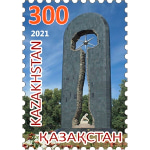Semipalatinsk Nuclear Test Site Closure Anniversary in Kazakhstan Date in the current year: August 29, 2026
 The Semipalatinsk Nuclear Test Site Closure Anniversary is observed in Kazakhstan on August 29 every year. It was established by the government of Kazakhstan in 2019 to commemorate the closing of the first and one of the largest nuclear test sites in the Soviet Union.
The Semipalatinsk Nuclear Test Site Closure Anniversary is observed in Kazakhstan on August 29 every year. It was established by the government of Kazakhstan in 2019 to commemorate the closing of the first and one of the largest nuclear test sites in the Soviet Union.The world’s first nuclear weapon was developed and used by the United States; in August 1945, the U.S. Army Air Forces detonated two atomic bombs over the Japanese cities of Hiroshima and Nagasaki. After Stalin learned of the bombings, he gave an order to accelerate the Soviet atomic bomb project.
During the Cold War, the USSR, the United States, and their respective allies competed for supremacy in nuclear warfare (the so-called nuclear arms race). The U.S. government assumed that the Soviet Union would not be able to create an atomic bomb until at least the mid-1950s, but the construction of the first Soviet nuclear test site began as early as 1947.
The site was located 150 km west of the city of Semipalatinsk in the Kazakh SSR. The construction lasted for two years, and the first successful nuclear test at the Semipalatinsk Test Site was conducted on August 29, 1949. The explosion of the RDS-1 nuclear bomb yielded 22 kilotons of TNT.
On August 12, 1953, RDS-6s – the first Soviet thermonuclear weapon – was detonated at the Semipalatinsk Test Site. The explosion yielded 500 kilotons of TNT. A certain level of background radiation left after the contamination of a part of the test site with the radioactive products of this explosion is still registered in some areas.
The USSR’s first two-stage hydrogen bomb, RDS-37, was detonated at the test site in 1955, and the first Soviet underground nuclear test was carried out in 1961. Following the signing of the 1963 Treaty Banning Nuclear Weapon Tests in the Atmosphere, in Outer Space and Under Water by the governments of the United States, the Soviet Union and the United Kingdom, only underground tests were carried out at the Semipalatinsk Test Site.
Over four decades (from 1949 to 1989), more than 450 nuclear tests were conducted at the Semipalatinsk Test Site, during which more than 600 nuclear and thermonuclear weapons were detonated, with the total yield 2500 time higher than the combined yield of Hiroshima and Nagasaki bombs. The radioactive contamination caused by 224 tests spread beyond the test site, causing increased radiation levels in the entire western Kazakhstan and exposing one million people to radiation.
In 1989, Kazakh politician and activist established the Nevada – Semipalatinsk international anti-nuclear movement, which campaigned for the closure of the Semipalatinsk Test Site. Thanks to the movement’s campaigning efforts, the number of planned tests at Semipalatinsk was reduced from 18 to 7 (the last one was conducted on October 19, 1989), and on August 29, 1991, the government of Kazakhstan officially closed the test site.
To commemorate the Semipalatinsk Test Site Closure Anniversary and honor the memory of people who died from the consequences of radiation exposure, thousands of people participate in the annual remembrance ceremony that takes place at the Stronger than Death memorial in Semey (the present-day name of Semipalatinsk).
- Category
- Anniversaries and Memorial Days
- Country
- Kazakhstan
- Tags
- Semipalatinsk Nuclear Test Site Closure Anniversary in Kazakhstan, holidays in Kazakhstan, remembrance days in Kazakhstan, nuclear tests